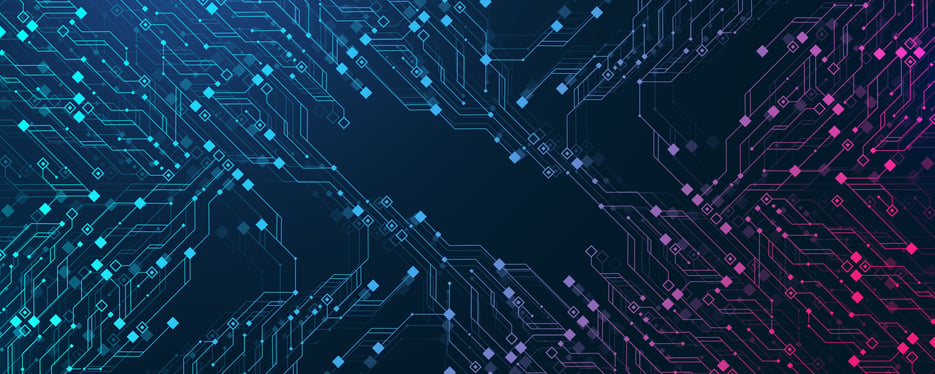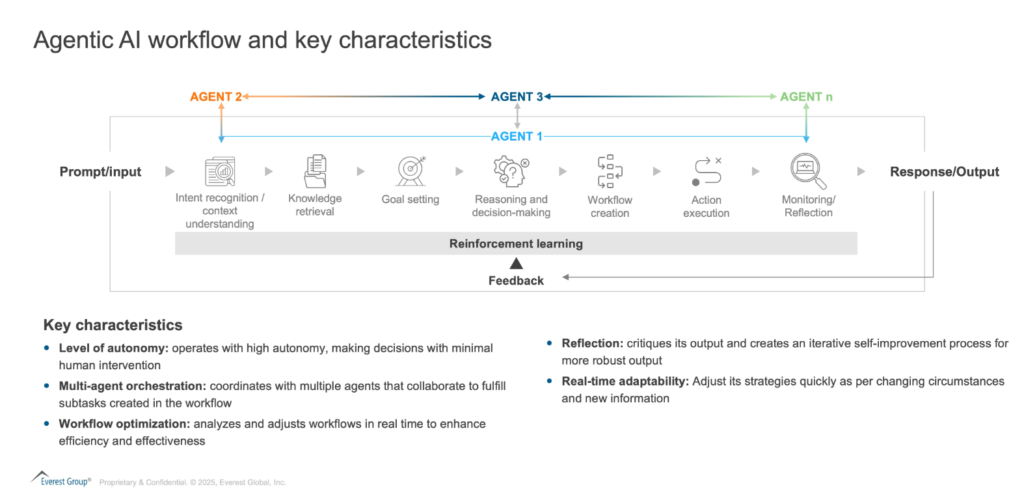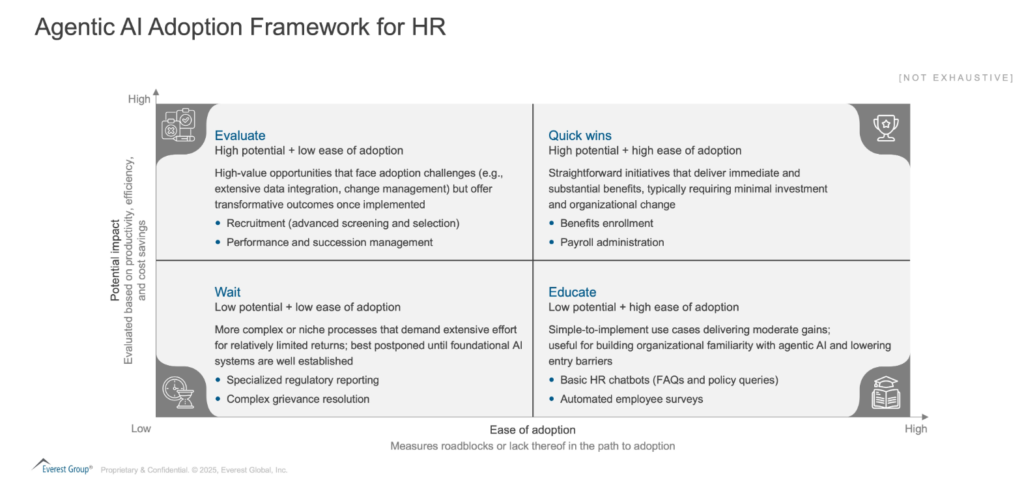Blog
Meet Your Digital Colleagues: AI Agents and the Next-Gen HR Revolution

Between hybrid work models, surging employee expectations, and an ever-changing talent market, Human Resources (HR) leaders are under growing pressure to do more with less.
Enter Agentic artificial intelligence (AI)—autonomous, AI-driven “digital workers” designed to operate tirelessly, without the need for breaks or time off, delivering consistent and efficient performance.
The recent Salesforce Agentforce 2.0 event in November–December 2024 highlighted the technology’s rapid evolution, reinforcing how AI can transform HR from a tangle of paperwork into a forward-thinking, employee-centric powerhouse.
Reach out to discuss this topic in depth.
Agentic AI 101: what’s different this time?
Agentic AI goes beyond traditional chatbots that rely on scripted, rule-based interactions. By leveraging advanced Natural Language Processing (NLP) and machine learning, these digital workers interpret instructions, refine their decision-making over time, and assume tasks once managed solely by human teams. In an HR context, this approach can significantly streamline benefits enrolment, expedite resume screening, enable real-time policy updates, and much more. Notably, HR is among the top three functions adopting Agentic AI, as highlighted in Everest Group’s recent blog on the agentic AI tech landscape.
This emerging trend illustrates the focus on cross-functional, high-volume processes in early adoption and underscores the technology’s expanding potential to reshape business processes across an enterprise.
Developments unveiled at Salesforce’s Agentforce 2.0 event also showcase improved language comprehension and predictive analytics. These enhancements coincide with a period in which HR leaders must deliver operational efficiency, meet heightened compliance requirements, and satisfy growing employee demands. Agentic AI’s adaptive and autonomous nature positions it as a promising vehicle for tackling these imperatives more effectively than past generations of conversational tools.
Exhibit 1

Agentic AI, as illustrated in Exhibit 1, are autonomous entities that proactively interpret, reason, and act, harnessing feedback loops and reinforcement learning to refine tasks with minimal human oversight.
Unlike conventional Generative AI (gen AI) that primarily outputs text or visuals, Agentic AI orchestrates end-to-end processes, from understanding requests to executing workflows. This design fosters greater automation, dynamic learning, and self-improvement, significantly reducing human intervention while boosting accuracy and efficiency.
Agentic AI adoption in HR: a staged approach
Establishing a foundation with transactional services:
Although Agentic AI is quickly gaining attention, its adoption in HR remains relatively early. The most promising initial applications focus on transactional tasks, particularly those involving high-volume, rules-based processes. According to Everest Group’s HR Outsourcing (HRO) process map, three areas are especially well-suited as entry points, these are as follows:
Benefits administration:
-
- Enrolment and inquiries: AI agents can handle routine questions about coverage, eligibility, and sign-up processes, freeing human teams for more nuanced tasks
- Continuous updates: Because regularly changing policies and regulations are updated promptly, ensuring all stakeholders are informed in real time
Payroll:
-
- Timesheets and tax calculations: AI agents can effortlessly manage repetitive calculations and identify anomalies, reducing the risk of payroll errors
- Employee queries: Instant responses to pay-related questions foster transparency and boost employee satisfaction
Employee data management:
-
- Automated data entry: When employees join or leave, Agentic AI can update relevant systems (Human Resources Information System (HRIS), payroll, benefits) without delay
- Status changes: For promotions, relocations, or department transfers, agents instantly push updates to relevant records, reducing administrative bottlenecks.
Starting with these transactional areas helps build trust in AI’s reliability and Return on Investment (ROI). It also allows organizations to fine-tune governance measures – like data security and compliance – before turning AI loose on higher-stakes tasks
Progressing to advanced HR services
Once you’ve seen success in the foundational, high-volume tasks, it’s time to expand Agentic AI’s role:
Recruitment:
-
- Beyond scanning resumes, AI can predict a candidate’s likelihood of success, schedule interviews, and even help gauge cultural fit. While you wouldn’t outsource final hiring decisions to a robot (not yet anyway), AI-driven shortlists can dramatically reduce time-to-fill
Performance and succession planning:
-
- By analyzing internal performance metrics and external labour market data, AI can identify emerging skill gaps, propose personalized training paths, and highlight potential future leaders
As the AI solutions learn and improve, they can become critical pillars in overarching HR strategies:
Workforce planning:
-
- AI agents can evaluate attrition rates, skill inventories, and hiring trends to forecast talent needs, enabling proactive workforce planning strategies
Employee engagement and relations:
-
- By parsing feedback and monitoring sentiment in employee communications, AI agents can raise early warning flags for potential disengagement or conflict. While the AI might surface the issue, an HR professional offers empathetic follow-through
Regulatory and compliance oversight:
-
- AI can monitor regulatory updates, notify relevant stakeholders, and automate compliance checks. The goal? Minimize the “we missed a new law again?” conversations
Exhibit 2 depicts this staged approach, illustrating how organizations can move from transactional “quick wins” to more complex, data-driven initiatives. By following this progression, HR functions can maximize both the efficiency gains and strategic benefits that Agentic AI has to offer.
Exhibit 2

Implications for enterprises and HRO providers?
The rapid advancement of Agentic AI technology will reshape the expectations and service delivery for enterprises and providers on multiple fronts:
-
- Enterprises stand to gain a boost in operational efficiency, accuracy, and faster decision-making. Freed from repetitive tasks, HR teams could focus on strategic initiatives such as talent-building, culture-building, and proactive workforce planning (maybe with the help of agentic AI as well!)
- Human Resources Outsourcing (HRO) providers now must evolve their service delivery offerings to incorporate AI-driven capabilities. Rather than merely executing basic processes, they can differentiate by offering integrated solutions that combine automation with strategic advisory services, ensuring clients extract maximum value from AI-enabled HR
Closing thoughts:
Agentic AI can significantly reshape HR operations by automating transactional tasks and enabling advanced, insight-driven processes.
For enterprises, robust data security and transparent decision-making frameworks are vital, especially when handling sensitive employee information and tasks like recruitment or performance reviews.
Meanwhile, service providers can differentiate by offering consultative guidance and integrated solutions, ensuring AI-driven outcomes align with organizational needs and culture. With deliberate scaling and a strong governance approach, organizations can unlock efficiency gains, improve decision-making, and preserve the human element critical to effective HR.
If you found this blog interesting, check out our Innovation Watch: Agentic AI Products report which delves deeper into another topic worked regarding agentic AI.
Ready to take your HR strategy to the next level? Let’s discuss how Agentic AI can power your transformation journey. Connect with Priyanka Mitra ([email protected]), Mustafa Pitolwala ([email protected]), or Chetan Somani ([email protected]) to learn more.